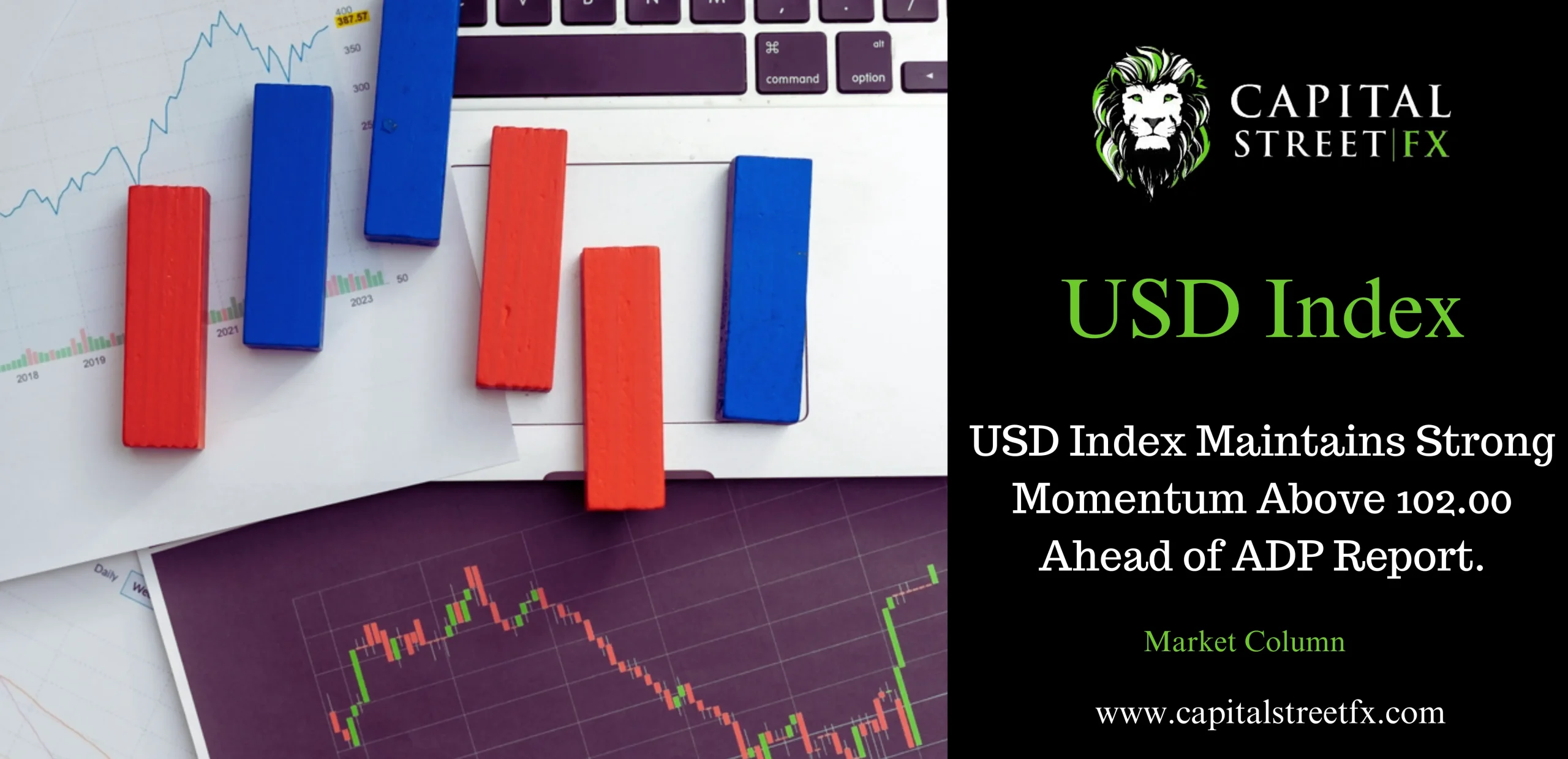USD Index Maintains Strong Momentum Above 102.00 Ahead of ADP Report.
Introduction
In the ever-evolving financial landscape, the USD Index (DXY) is basking in optimism as it maintains its consistent upward momentum above 102.00, showcasing its strength against major rival currencies. This article delves into the factors contributing to the USD Index’s resilient bid bias and its focus on crucial data releases, with the ADP report poised to command attention during the North American session.

USD Index: A Steady Climb
Despite facing volatility and uncertainties, the USD Index remains steadfast in its upward trajectory. Emerging from mid-July’s lows of 99.50, the index has experienced a swift recovery, with the current focus on solidifying the breakout above the critical 102.00 hurdle. One of the primary drivers behind this uptrend is the confidence in the US economy, supported by investors’ reassessment of future monetary policies from the Federal Reserve and other major central banks.
ADP Report: Spotlight on US Labor Market
As the USD Index continues its ascent, all eyes are on the upcoming ADP report for the month of July, which will shed light on job creation in the US private sector. The labor market’s performance is a key indicator of economic health, making this report crucial for investors and policymakers alike. Additionally, MBA’s weekly report on mortgage applications will provide valuable insights into the real estate market’s pulse.
What to Watch for Around USD
The USD Index’s performance is closely linked to the 55-day and 100-day Simple Moving Averages (SMAs), currently residing around the pivotal 102.60 range. These SMAs play a critical role in supporting the index’s recovery and determining its short-term direction. However, the dollar faces challenges amid a cooling labor market and ongoing disinflation, necessitating a data-dependent posture from the Federal Reserve.
Furthermore, rumors of July’s rate hike being the last of the current cycle have weighed on the dollar’s outlook, leading to potential pressures in the near term.
Major Events on the Horizon
This week’s major events in the US will have a significant impact on the USD Index’s trajectory. Keep a close eye on the following data releases:
- ADP Employment Change (Wednesday)
- Initial Jobless Claims, Final Services PMI, ISM Services PMI, Factory Orders (Thursday)
- Nonfarm Payrolls, Unemployment Rate (Friday)
USD Index Technical Analysis
The USD Index is currently trading at 102.19, with a potential break above the weekly high of 102.43 (set on August 1) paving the way for further gains. Key resistance levels include 103.54 (the weekly high set on June 30) and 103.65 (the 200-day SMA). On the flip side, immediate support lies at 100.55 (the weekly low on July 27), followed by the psychological level of 100.00 and the 2023 low of 99.57 (set on July 13).
FAQs
1. What is the significance of the USD Index?
The USD Index is a crucial benchmark that compares the US dollar’s value against several major rival currencies. It serves as an indicator of the dollar’s overall performance in the global forex market.
2. How does the ADP report impact the financial markets?
The ADP report provides valuable insights into the health of the US labor market. Strong job creation often signals a robust economy, positively influencing investor sentiment and the dollar’s value.
3. What role do moving averages play in the USD Index analysis?
Moving averages, such as the 55-day and 100-day SMAs, act as key support and resistance levels for the USD Index. They help traders identify trends and potential reversal points.
4. Why is the cooling labor market a concern for the dollar?
A cooling labor market could indicate an economic slowdown, leading to reduced consumer spending and potential disinflationary pressures, impacting the dollar’s strength.
5. How does the Federal Reserve influence the USD Index?
The Federal Reserve’s monetary policy decisions, including interest rate changes, directly impact the USD Index. A hawkish stance (raising rates) typically strengthens the dollar, while a dovish approach (lowering rates) weakens it.
6. Which events should traders closely monitor this week?
Traders should closely follow data releases like ADP Employment Change, Initial Jobless Claims, Final Services PMI, ISM Services PMI, Factory Orders, Nonfarm Payrolls, and the Unemployment Rate to make informed trading decisions.

